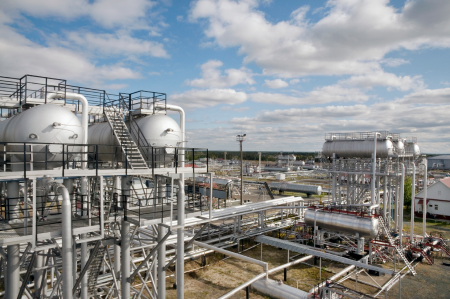Vibration within piping downstream of high pressure cut control valves and regulators

Description
This one calculates and assess vibration within piping downstream of high pressure cut control valves and regulators and then recommends appropriate action.
Calculation Reference
Pipe Vibration
Valve Design
Fluid in Pipes
Vibration in piping systems downstream of high-pressure control valves and regulators can lead to fatigue failure, noise, and damage to equipment. Assessing and mitigating these vibrations is essential for ensuring the reliability and safety of the piping system.
Here's a general procedure to calculate, assess, and recommend appropriate actions for vibration in piping downstream of high-pressure control valves and regulators:
-
Data collection:
- Gather information about the piping system, such as pipe material, diameter, wall thickness, and layout.
- Collect data on control valves and regulators, such as their type, size, flow rate, pressure drop, and operating conditions.
- Obtain data on the fluid properties, such as density, viscosity, and speed of sound.
-
Vibration analysis:
- Perform a vibration analysis of the piping system using specialized software or analytical methods. This may include modal analysis, response spectrum analysis, or time-history analysis.
- Identify the dominant frequencies and mode shapes of the piping system.
- Calculate the vibration levels in the piping downstream of the control valves and regulators based on the operating conditions and fluid properties.
-
Assessment:
- Compare the calculated vibration levels to relevant industry standards, such as the American National Standards Institute (ANSI) / Hydraulic Institute (HI) Standard 9.6.4, 'Mechanical Vibration - Evaluation of Machine Vibration by Measurements on Non-Rotating Parts,' or the International Organization for Standardization (ISO) 10816 series, 'Mechanical Vibration - Evaluation of Machine Vibration by Measurements on Non-Rotating Parts.'
- Assess the risk of fatigue failure and damage to equipment due to the calculated vibration levels.
-
Recommendation:
- If the vibration levels exceed acceptable limits, consider the following mitigation measures: a. Modify the piping layout to reduce vibration transmission. b. Add pipe supports or restraints to reduce vibration amplitude. c. Use damping materials, such as vibration isolators, to absorb and dissipate vibrations. d. Modify the control valve or regulator operation, such as adjusting the pressure drop or flow rate, to reduce vibration excitation. e. Replace the control valve or regulator with a different type or size that generates less vibration.
- Implement regular inspection and monitoring of the piping system to detect and address potential vibration issues.
Please note that this procedure provides a general guideline for assessing and mitigating vibrations in piping systems downstream of high-pressure control valves and regulators. For a comprehensive analysis, it is crucial to consult with a qualified engineer with experience in vibration analysis and piping system design.
Calculation Preview
Full download access to any calculation is available to users with a paid or awarded subscription (XLC Pro).
Subscriptions are free to contributors to the site, alternatively they can be purchased.
Click here for information on subscriptions.



